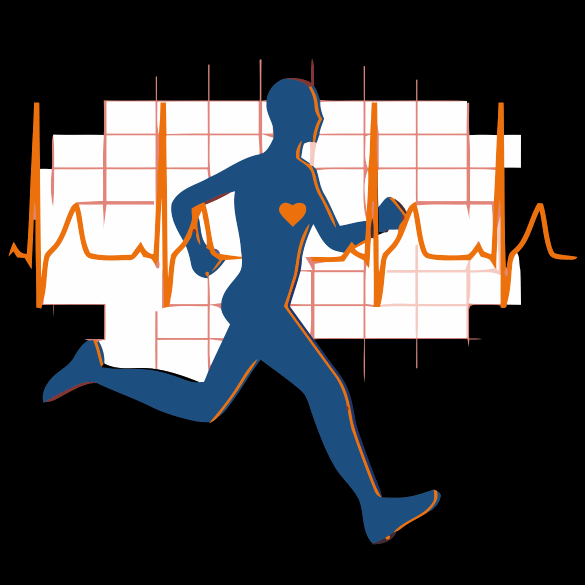How to Measure Your Overall Level of Fitness

Measuring your cardiovascular fitness is best done using your heart rate. There are two important factors to consider, the resting heart rate, and how quickly it returns to that resting heart rate after physical activity.
Lower the resting heart rate is an indication that the heart can pump as much blood as a faster beating heart, with obviously less effort. This of course is assuming that the low heart rate is not because of some kind of heart illness. Some long distance runners can have a resting heart rate of 35. The average resting heart rate is between 60 and 70. However, keep in mind that everyone is somewhat different and even a healthy person may have a higher resting heart rate. Because of this testing just the resting heart rate may not be very accurate.
Another method is to see how long it takes your heart rate to return to its resting rate after physical activity. There is no specific time that you should aim for, because everyone is different. However, doing this test before you start your program, and then again a few weeks after should show an improvement.
Resting heart rate is best measured when you first wake up in the morning before moving around. And it is more accurate if you wake up on your own, as opposed with an alarm, you did not have any disturbing dreams prior to waking up, and you rested well. Doing this for a few nights is best so you can obtain an average.
Once you know your resting heart rate then go for a jog. When you are done jogging take your heart rate every two minutes and see how long it takes to get to the resting heart rate number. Because now you are fully awake and moving it probably will not go all the way to the resting heart rate but it should get pretty close.
There are other methods as well, that are even simpler. As you become fitter you should notice that things become easier to do. For example, climbing stairs, walking to the store, etc now take less effort. This is a sign that you are becoming fitter.
As we said before muscular endurance is dependent on the ability for a muscle, or muscle group, to move repeatedly under a specific amount of endurance.
The best way to measure this is a before and after test, or series of tests. For example, before starting your workout program pick 3-4 different tests and see how many repetitions you can perform with a specific resistance. Record the resistance used and the results. Then, after a few weeks of following your program to the same tests with the same resistance and see if you can perform more repetitions.
Some examples of test can include push-ups, chin-ups, sit-ups, leg extensions, etc. Make sure proper form is used everytime so as to be as objective as possible.
Measuring flexibility is quite easy. The most popular test for this is to sit on the ground with your legs straight in front of you. Reach forward with your hands and measure (you may need someone to help you with this) how close you get to touching your toes. If you can go past your toes then measure how much farther you can go.
Before doing this make sure you have warmed up properly so you don't hurt yourself. And as always make sure you use proper form.
Measuring flexibility is quite easy. The most popular test for this is to sit on the ground with your legs straight in front of you. Reach forward with your hands and measure (you may need someone to help you with this) how close you get to touching your toes. If you can go past your toes then measure how much farther you can go.
Before doing this make sure you have warmed up properly so you don't hurt yourself. And as always make sure you use proper form.



Leave a Reply